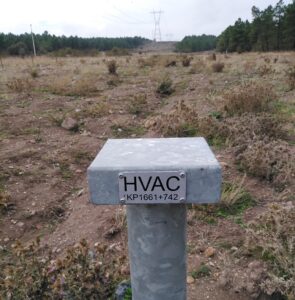AC Mitigation
 As it’s known that the cathodic protection of the steel structures are provided through “DC sources”. However, a steel structure could also be corroded by alternative current, which is known as AC induction to the structure via close by AC sources. There are two different measurements to be considered in AC induction; firstly, an AC current density on a structure and secondly AC potential of a structure versus a reference electrode. There are different standards that stand up for many common points but the main idea is to lower both; current density and AC potential. High current density causes a structure to be corroded and high AC potential is a potential risk for health and safety.
As it’s known that the cathodic protection of the steel structures are provided through “DC sources”. However, a steel structure could also be corroded by alternative current, which is known as AC induction to the structure via close by AC sources. There are two different measurements to be considered in AC induction; firstly, an AC current density on a structure and secondly AC potential of a structure versus a reference electrode. There are different standards that stand up for many common points but the main idea is to lower both; current density and AC potential. High current density causes a structure to be corroded and high AC potential is a potential risk for health and safety.
Both of the measurements must be done to evaluate the level of risk for corrosion and health-and-safety manner.

Because, low AC potential may sometimes cause high current density which means the structure is safe to touch at steady-state, however, is risky in corrosive manner.
There are many factors influence the magnitude of the AC induction which are; soil resistivity along the pipeline/structure, electrically long pipeline, short pipeline, lossy pipeline, a pipeline with groundings/without groundings, depth of the structure, insulation joints along the pipeline, complex structures on the way etc… A high-purity zinc anode is commonly used in grounding cells or structure grounding applications. A zinc ribbon anode is installed parallel to a pipeline or localized zinc anodes are installed on a pipeline. The product properties are described detailly in Zinc Anodes products page.
An AC mitigation requires complex calculation so, we use AC induction modelling softwares to mitigate an AC corrosion. Many solutions are provided for Client’s review and with our experienced and expert team, our company is capable of doing a high-quality installation and commissioning of AC mitigation system.
